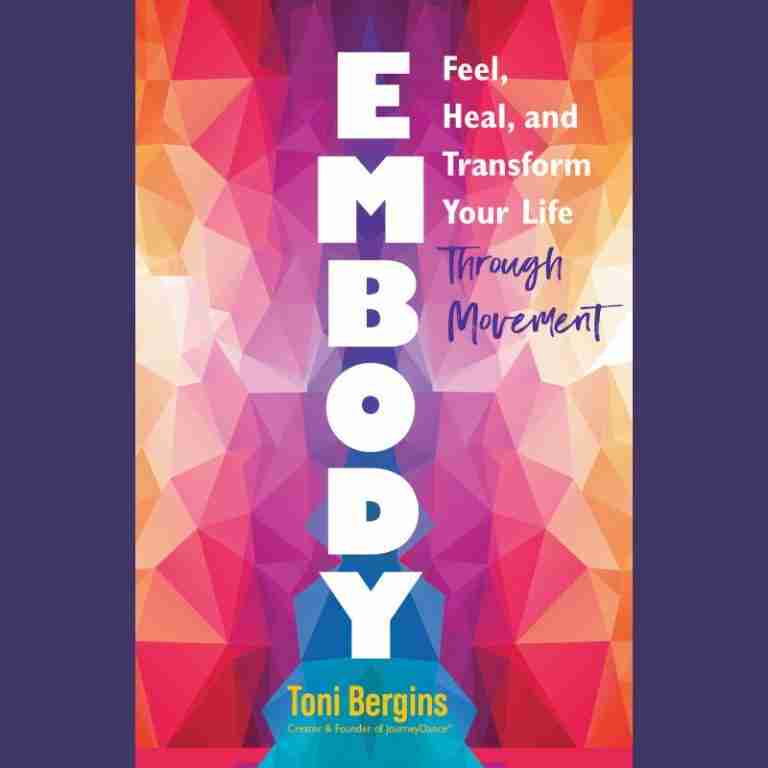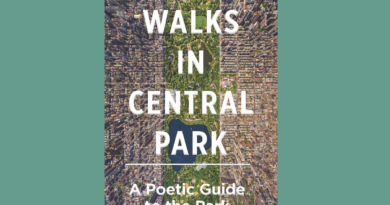Embodied Living: Recognizing and Giving Your Body What it Needs
Written by: Toni Bergins
The profound connection between physical presence and self-awareness can only exist when you are embodied. I learned this lesson unexpectedly, which had a lasting impact, and helped me get out of my mind and back into my body.
Back when I was in the final stages of healing my food and body image issues, I went to lunch with my brilliant friend, Joshua Rosenthal. At the buffet line, I told him that my old condition was flaring up. I was struggling with what to eat and what not to eat.
His reaction really surprised me.
He said, “Let’s hold hands for a minute.” As we held hands, he continued, “Can you feel how you’re just dropping into your body so much more as we touch our hands together?”
As we sat together, I could feel more present in my body. I could sense when I was full and complete instead of eating to the point of almost discomfort.
When you’re disembodied, food becomes a way of literally feeling pressure against your body.
What Does the Term Embodied Mean?
I often wonder if that’s what makes us eat so much as a culture. Is it because we’ve lost touch with our bodies and dismissed the need for regular physical contact? Have we relegated physical touch to only sex and primary relationships?
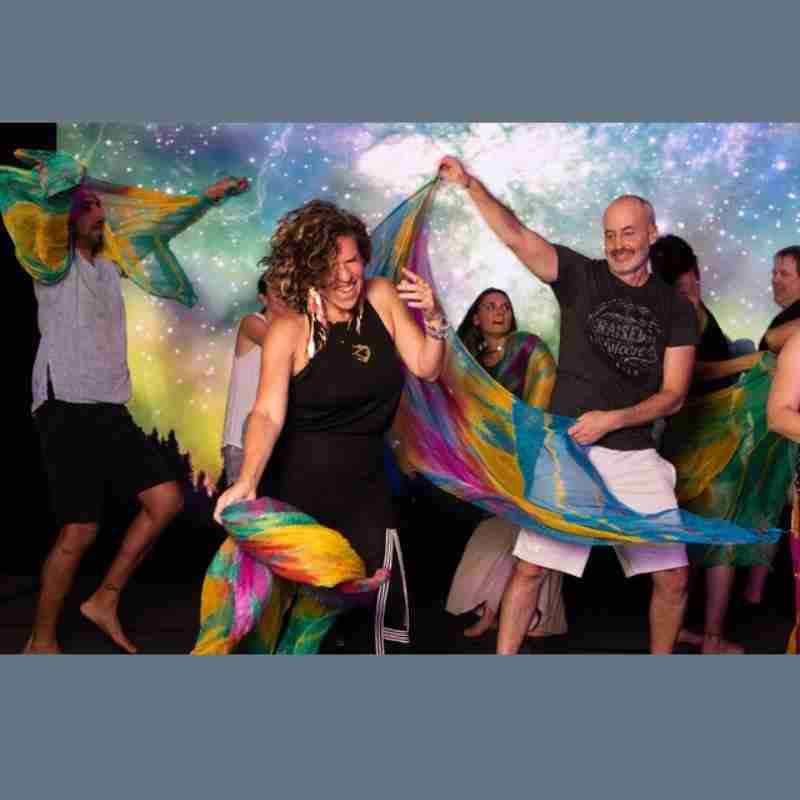
We are missing out on the benefits of embodied living.
Yet once you’re embodied, your body will start talking to you, giving you signals all the time about what it needs, likes, and what it doesn’t like. When you’re in your body, you’ll be able to read the signals: does this food, touch, or situation, feel good?
While I was healing from my eating disorder, I recognized that my body didn’t feel good when I was either totally full or extremely hungry. It felt best when I was eating what my body needed and not following my mind’s suggestions for sugar and foods that gave me an instant high.
My body showed me that it didn’t like it when I consumed large amounts of sugar because I’d have a burning hot sensation in my face or I’d feel completely exhausted right after eating.
When I wasn’t paying attention to what my body needed, I would overwrite my body’s message and continue eating from my mind and my emotions to shut down or hide or stuff or numb.
As you become embodied and grounded, and have the skills to better navigate your emotions, you’ll be able to stop numbing and start nourishing. Positive, consensual physical touch and the lessons of the Embodiment quality can help you stay grounded.
The Power of Touch
If you have people in your life you can touch and be close with, enjoy it regularly. No? Not to worry. We can keep ourselves embodied.
By creating contact—or touch—with your skin, muscles, bones, and the floor, you are learning another way to become grounded.

When you’re embodied, you may notice for the first time that your body is a nice place to be. You’ll be fully aware of yourself whether you’re on the floor, in a chair, or with other people.
With practice and intention, you might start to be a little kinder to yourself, or less stressed about the way you look or act. This is how you learn to release perfectionism: become aware of yourself instead of being self-conscious.
What’s the difference? Self-consciousness is intrinsically questioning, judging, and uncomfortable, while awareness is noticing and reflecting without judgment.
Understanding Embodiment
Embodiment is more than just a concept; it’s a way of living that acknowledges the deep connection between our minds and bodies.
When we talk about embodiment, we’re referring to the idea that our thoughts, emotions, and experiences are not separate from our physical selves but are deeply rooted in our bodies.
This interconnectedness means that your physical sensations, emotions, and thoughts are all part of a unified experience.
Living an embodied life means being fully present and engaged in our own bodies. It involves paying close attention to what your body is telling you and allowing yourself to be guided by your intuition and instincts.

This practice of embodiment, through movement and music, helps us tap into our inner wisdom, making more informed decisions that align with our true needs and desires.
By understanding and committing to a regular embodiment practice, you can develop a deeper appreciation for the intricate relationships between your mind, body, and the world around you.
The Body-Mind Connection
The body-mind connection is the fundamental aspect of embodiment, highlighting the intricate web of relationships between your physical body, emotions, and thoughts.
Our bodies are not just passive vessels for our minds; they actively participate in our emotional and mental experiences.
For instance, when you experience physical pain or discomfort, it can significantly impact your mental and emotional states, and the reverse is also true.
This connection is bidirectional. This means your thoughts and emotions can influence your physical body, and your physical body can influence your thoughts and emotions.
Consider how stress or anxiety can cause our bodies to tense up, leading to physical symptoms like headaches or stomach problems.
Conversely, engaging in physical activities that bring us joy and relaxation, such as dance, yoga, or walking, can have a positive effect on our mental and emotional well-being. Understanding this connection helps you appreciate how closely intertwined your physical and mental health truly are.
Disembodiment and Its Effects
Disembodiment refers to the experience of being disconnected from our physical bodies. This disconnection can manifest in various ways, such as feeling numb or detached from our emotions or experiencing physical sensations without being able to interpret them.
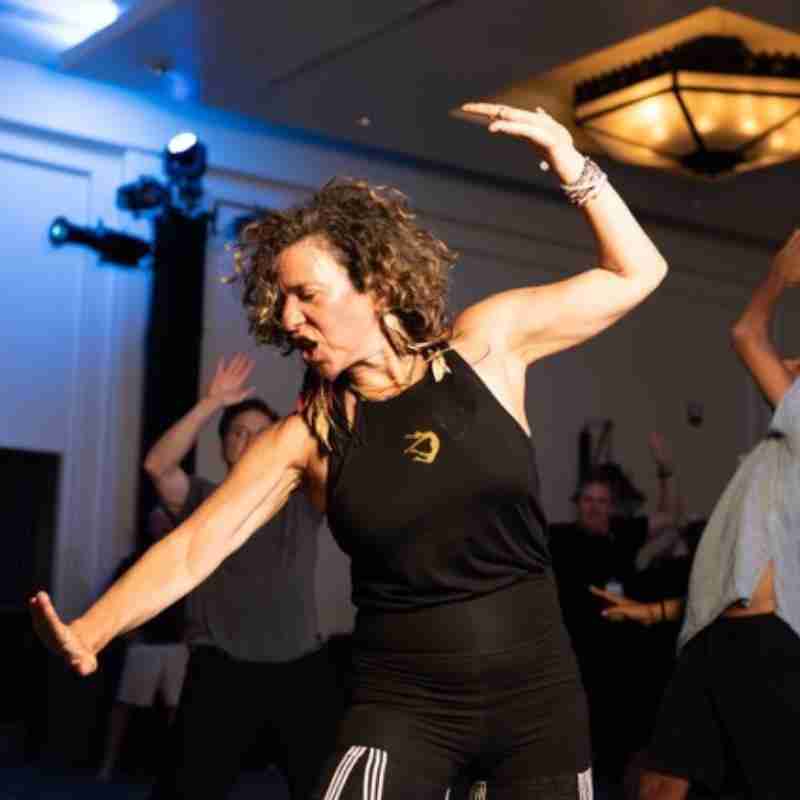
Several factors can contribute to disembodiment, including trauma, stress, and societal or cultural expectations that discourage us from tuning into our bodies.
The effects of disembodiment on your physical and emotional health can be profound. When you are disconnected from your body, you may experience increased stress and anxiety, decreased self-awareness, and difficulty with emotional regulation.
This disconnection can also lead to a sense of detachment from your own life and the world around you, feeling like you’re on autopilot, making it challenging to feel fully engaged and present.
Recognizing and addressing disembodiment is crucial for maintaining your overall well-being and fostering a deeper connection to your own life.
Embodied Awareness and Well-being
Embodied awareness is the practice of paying closer attention to our physical bodies and the sensations, emotions, and thoughts that arise within them.
This practice involves cultivating a sense of curiosity and openness towards our experiences, allowing ourselves to be guided by our intuition and instincts. By developing embodied awareness, we can enhance our overall well-being.
When you are embodied, you are better equipped to regulate your emotions, manage stress and anxiety, and cultivate a sense of self-awareness and self-acceptance.
This heightened awareness allows us to listen to our bodies and respond to their needs more intuitively and compassionately.
Embodied awareness not only benefits our emotional health but also enhances our physical health. It encourages us to make choices that support our overall well-being.
Embody Your Body Starting Right Now
Integrating embodiment into daily life involves cultivating a sense of awareness and presence in our physical bodies. This can be as simple as taking a few deep breaths before starting our day. Try dancing to music, and getting your energy moving or your blood pumping!
Whatever you choose, remember the goal is to pay attention to our physical sensations as we move through our daily activities.
By incorporating these practices, we can develop a deeper connection to our bodies and enhance our overall well-being.
One effective way to integrate embodiment into daily life is through mindfulness. Mindfulness, or as I like to call it, self-awareness, involves paying attention to the present moment without judgment or distraction.
This can be practiced in various ways, such as through meditation, yoga, or simply focusing on our breath and physical sensations as we go about our day.
Remember, walking, swimming, or dancing like no one is watching can also help us cultivate a sense of connection to our bodies and the world around us.
By integrating embodiment into your daily life, you can foster a deeper sense of connection to your own body, mind, and the world around you.
This practice can enhance your physical and emotional health, and cultivate a sense of self-awareness and self-acceptance that benefits all areas of our lives.
You might not notice this energetic shift right away, but other people will.
They’ll sense your ability to be in the moment and will want to be with you. They’re responding body to body, not just mind to mind, in a state of complete presence and total attention in the moment.
You Can Get Started With Grounding
Embodiment starts with a conscious grounding. You’re literally connecting yourself to the earth, letting go of the tension we normally carry, and finding the safe space that’s right inside of us.
This allows us to create more space in the body, mind, and heart. We feel so present that the to-do list and worries that are typically swimming around can be momentarily forgotten and take a backseat to what’s really important.
Grounding helps slow the racing thoughts in the mind, leading to a deep sense of relaxation. We give the critical mind a rest, allowing us to perceive ourselves differently.
Our minds have less influence over our decisions because we also have our sensations to rely on.
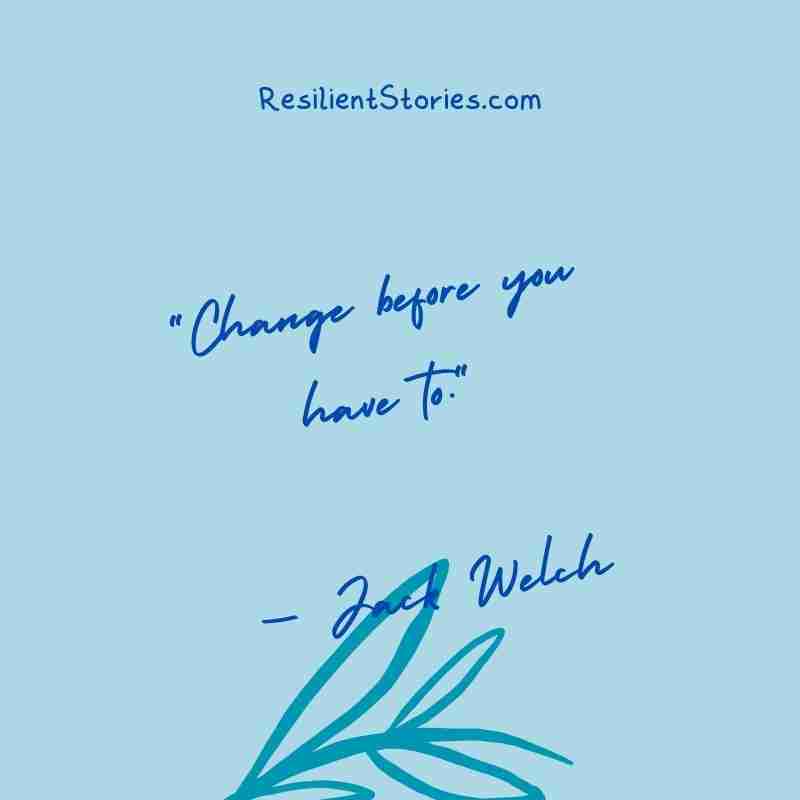
If you’re totally exhausted but your to-do list is 8,000 items long, you might ignore the signals your body is sending to take a nap or rest so that you won’t get run down or burn out.
If ignored, eventually your body will send stronger messages. Dismiss those, and you may end up getting sick or injuring yourself. Then you’ll be forced to rest.
When you’re embodied and grounded, you’ll hear messages earlier, and you’ll be able to make a better decision: I know I have a ton to do but I won’t be able to do it well because I’m so tired. I need to rest.
Take Care of Yourself From a Holistic Perspective
On an emotional level, grounding teaches us trust. This conscious support can help us let go of stress and tension. We begin to trust our bodies and feel safer in our own skin.
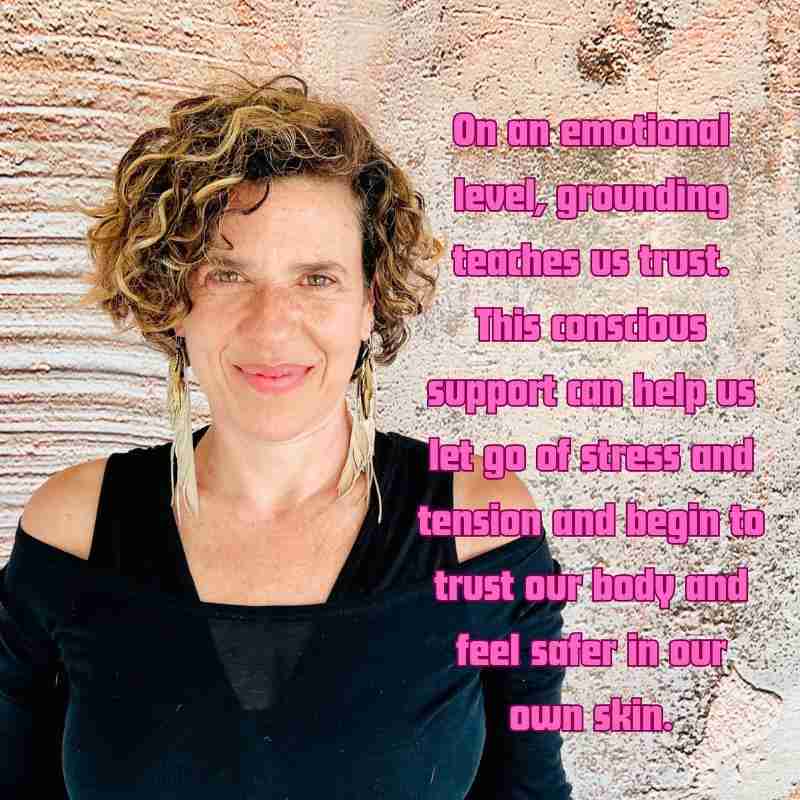
People often hold emotions in safe little compartments in their psyches and bodies. If we’ve gotten the message that we’re not safe, these emotions get stuck. Feeling grounded allows us to also feel safe, and when that happens we can drop the defense mechanisms that no longer serve us.
Then, we can open the compartments of emotions and let them surface, be felt, be fully expressed, and pass through us like a wave.
On a mental level, we’re completely letting our thoughts go into the earth, releasing them, letting go of our mental chatter. We notice the sensations of our body touching the ground, but we aren’t actively thinking.
On the spiritual level, grounding allows us to connect with our authentic self, source energy, and the great mother of us all, the Earth.
When we tap into it, we’re connected to a sense of presentness. And when we can tap into our soul source energy, the body becomes our sacred home, and we can establish a new relationship within.
Are you embodying your body? What changes can you make today? Leave us your thoughts in the comment section.
Toni Bergins, M.Ed., is an embodiment trailblazer who has taught at the premier holistic healing centers for the last 27 years. She is on permanent faculty at the Kripalu Center for Yoga & Health, and has worked there as a movement artist, dance educator, expressive arts workshop leader, and expert in creating transformational workshops. Her new book is, Embody: Feel, Heal, and Transform Your Life through Movement Health Communications Inc., Oct. 29, 2024.
Learn more at journeydance.com.

